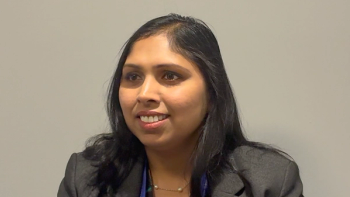
- Oncology Vol 29 No 4_Suppl_1
- Volume 29
- Issue 4_Suppl_1
(P021) Improving Clinical Documentation and Prospectively Populating a Research Database Through an Electronic Data Capture System for Routine Clinical Care
We implemented an EDC system for routine clinical use in our breast RT service that resulted in significant time savings for clinical documentation and a prospective population of a database for future outcomes research. Additional follow-up is needed to determine how easily this system can be generalized to other RT disease sites and practices.
Hubert Y. Pan, MD, Timothy J. Edwards, BS, David P. Giragosian, PsyD, Emma B. Holliday, MD, Cameron W. Swanick, MD, Geoffrey V. Martin, MD, Karen E. Hoffman, MD, Simona F. Shaitelman, MD, Wendy A. Woodward, MD, PhD, Benjamin D. Smith, MD; UT MD Anderson Cancer Center
INTRODUCTION: With the current emphasis on value-based health care, there is increased importance of quantifying value and reducing cost. Electronic health records (EHRs) are being adopted at an increasing rate but often capture information as unstructured text, requiring time-consuming retrospective reviews to extract outcomes data. Electronic data capture (EDC) using case report forms is commonly used to collect structured data for clinical trials. We implemented a web-based EDC system for routine clinical care and describe our experience piloting the system for our breast radiation therapy (RT) service.
METHODS: Our institution uses dictation and transcription for clinical documentation stored in an in-house–developed EHR. A separate RT-specific system contains RT prescriptions, schedules, and treatment records. The implemented EDC serves as an intermediary between these two systems. Providers specify patient, tumor, and treatment characteristics through the EDC using structured data fields. These fields are merged with relevant data extracted from the RT system to generate template-based notes in the EHR for simulation, treatment planning, quality assurance (QA), weekly on-treatment visits (OTVs), and treatment summaries. Dictation and EDC times are reported as means and compared using t-tests.
RESULTS: The EDC had been used by 21 providers and generated 850 notes for 127 patients during the most recent month. A consult form collecting tumor and treatment details was completed in the EDC as an initial additional step, requiring 2.5 minutes. This form generated a patient identifier used in all subsequent notes. Simulation notes, treatment planning notes, and treatment summaries were all completed more quickly using the EDC as compared with dictation (P < .001). QA notes recording the results of weekly treatment plan reviews were completed in real time during the conference (2.1 min with dictation). OTV notes were often completed during the patient encounter using a tablet (1.8 min with dictation). The total documentation time for a typical course of breast RT was 5.4 minutes with EDC and 22.1 minutes with dictation.
CONCLUSION: We implemented an EDC system for routine clinical use in our breast RT service that resulted in significant time savings for clinical documentation and a prospective population of a database for future outcomes research. Additional follow-up is needed to determine how easily this system can be generalized to other RT disease sites and practices.
Proceedings of the 97th Annual Meeting of the American Radium Society -
Articles in this issue
Newsletter
Stay up to date on recent advances in the multidisciplinary approach to cancer.
















































































